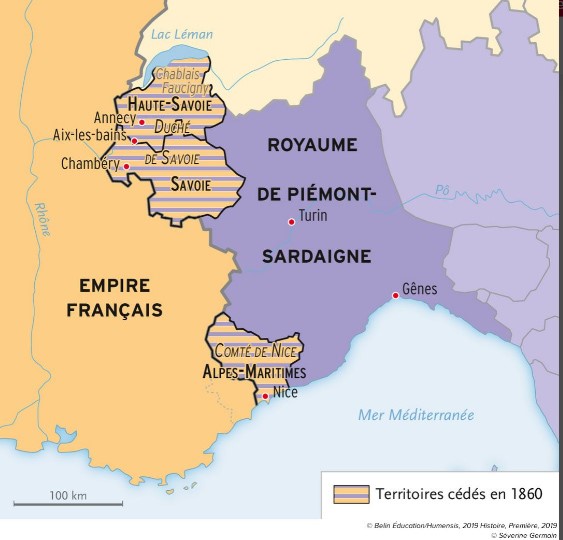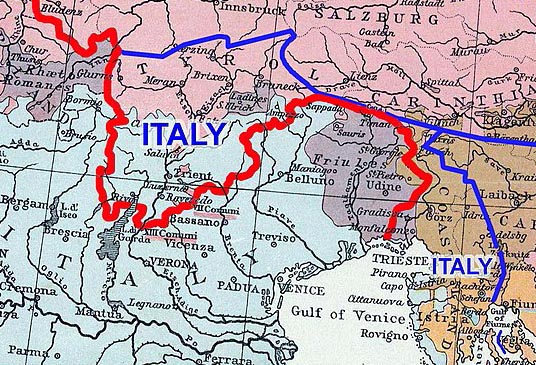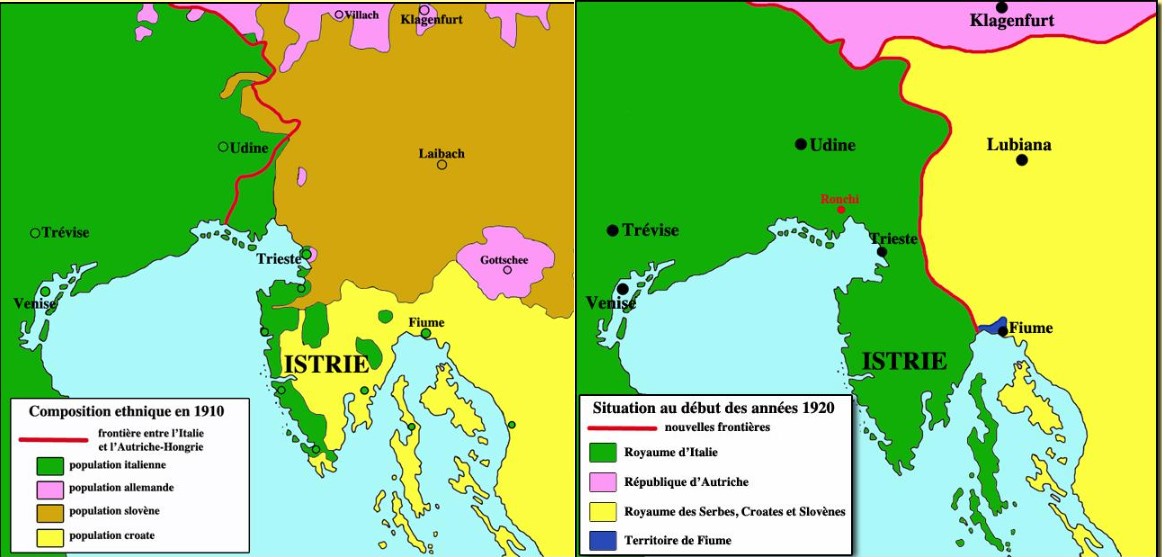These Alpine passes that used to be border crossings… and those that have become so
A pass is defined by its location on a watershed(EPL). This EPL is often an administrative boundary and if this is a border between 2 states, the pass will have a ” high ” status of border pass … and it will be listed in the catalog of each of the two countries.
This status may not be permanent, in the course of history treaties have shifted the borders.
Some examples:
France and Italy
With the treaty of Turin (1860) and the attachment of the Duchy of Savoy and the County of Nice to France, several passes of our Alps ceased to be border passes (for example the Galibier and the Bonette) and others became border passes (the Mont-Cenis and the Vescavo – but they will be border passes only until 1946 with the treaty of Paris)

Austria and Italy
In 1919, with the Treaty of St. Germain, the Trentin (WelschTirol) and the South Tyrol (SüdTirol), called Alto Adige were ceded by Austria to Italy. (Provinces of Trento and Bolzano).
The Stelvio ceases to be a frontier and the Brenner becomes one.

In red the border between Italy and the Austro-Hungarian Empire (before the Treaty of St. Germain)
In blue borders : Italy/Austria, Italy/Yugoslavia and Austria/Yugoslavia (after the treaty)
Further east between Italy and Yugoslavia
With the treaty of Saint Germain en Laye (1919), the border is pushed back towards the east and several passes cease to be border crossings (for example Passo di Solarie) and will become so again in 1947 with the treaty of Paris.
Others like Preval Vršič (or Passo di Moistrocca) will be border only from 1919 to 1947.

In red the border before (left) and after (right) the Treaty of Saint Germain.
The article (on the Cyclotouristes Grenoblois website) :” Those Alpine passes that were border passes … and those that have become ” reviews, in detail, the changes that have occurred all along the Alpine arc since 1860.
